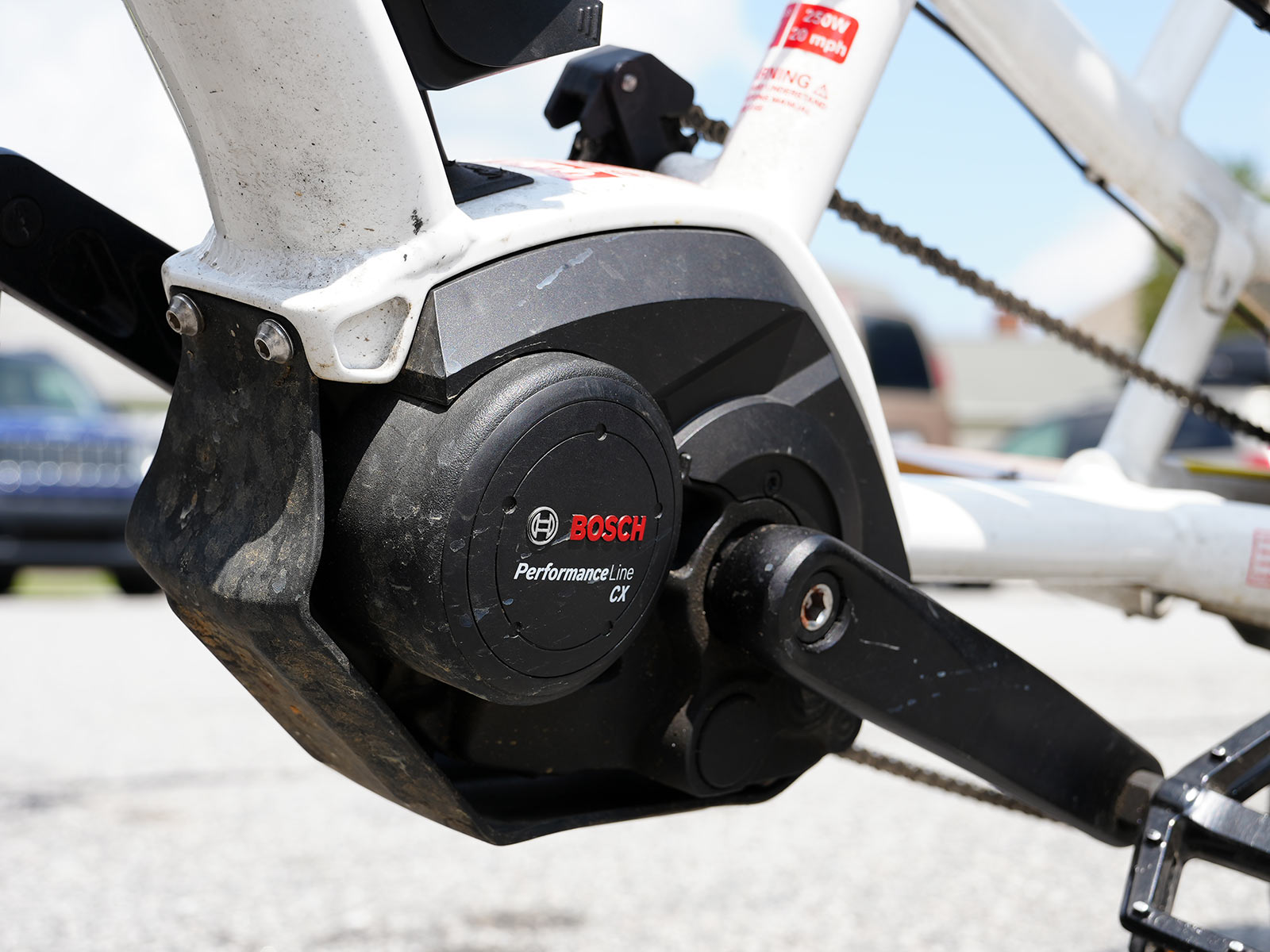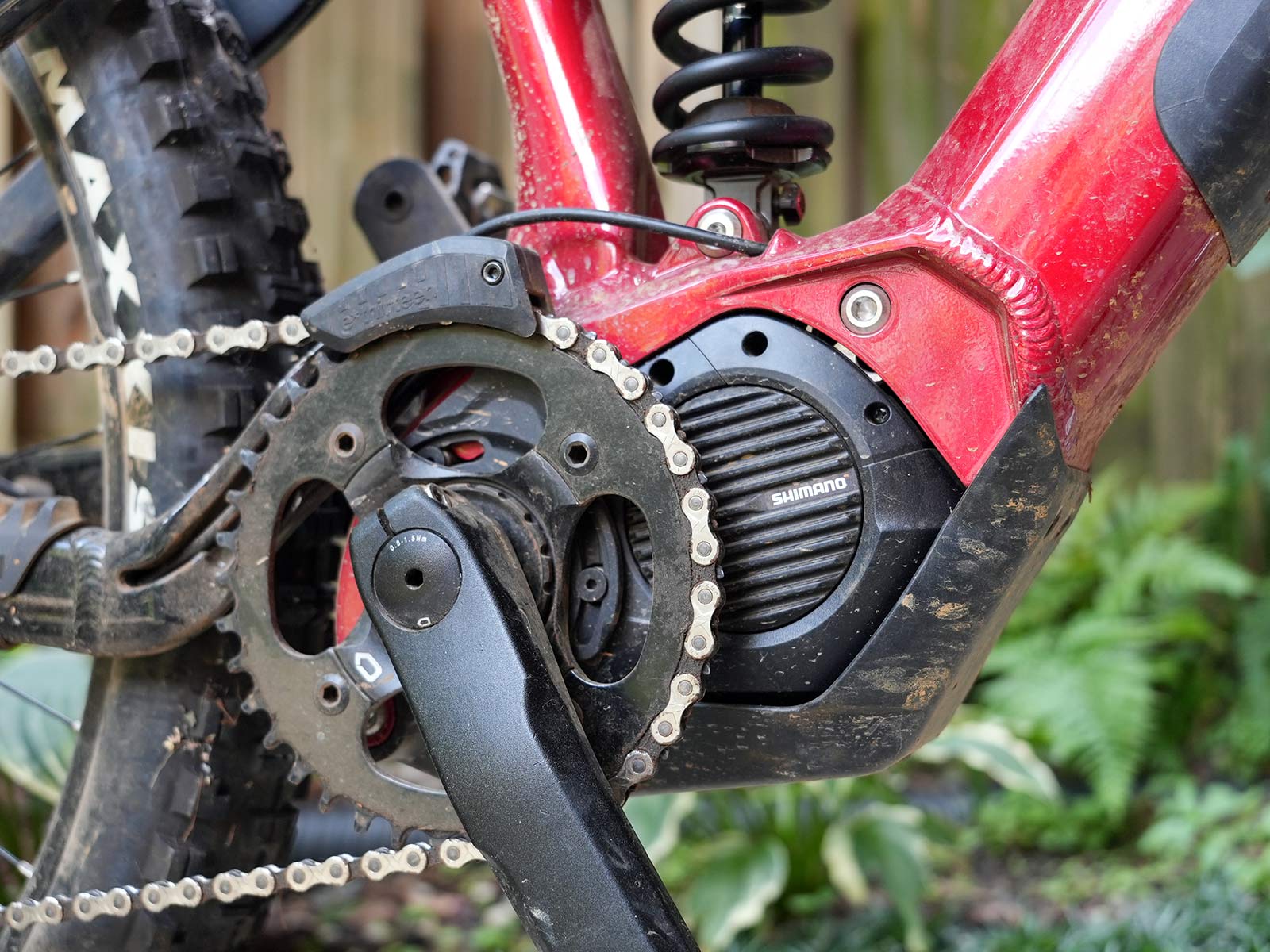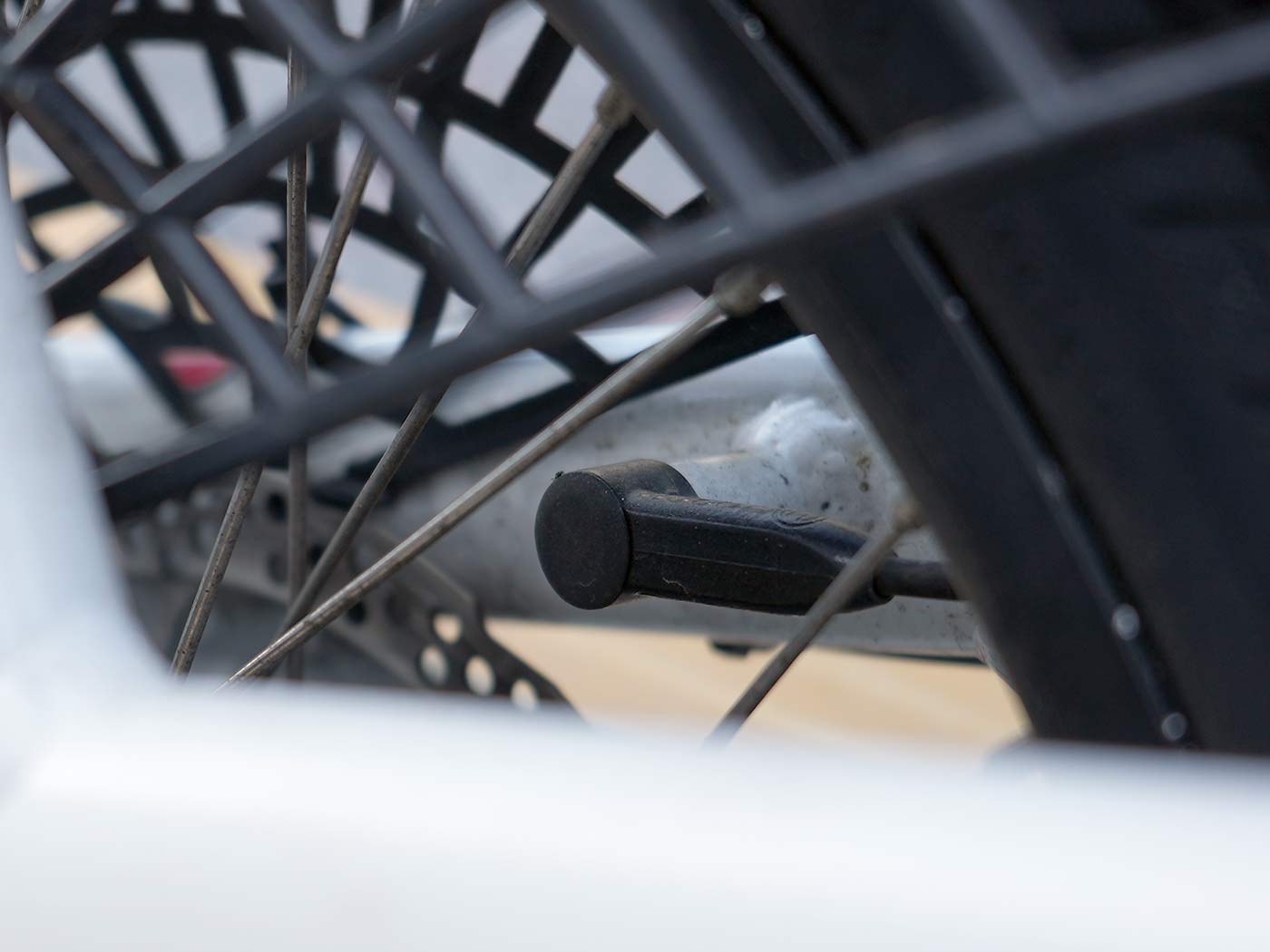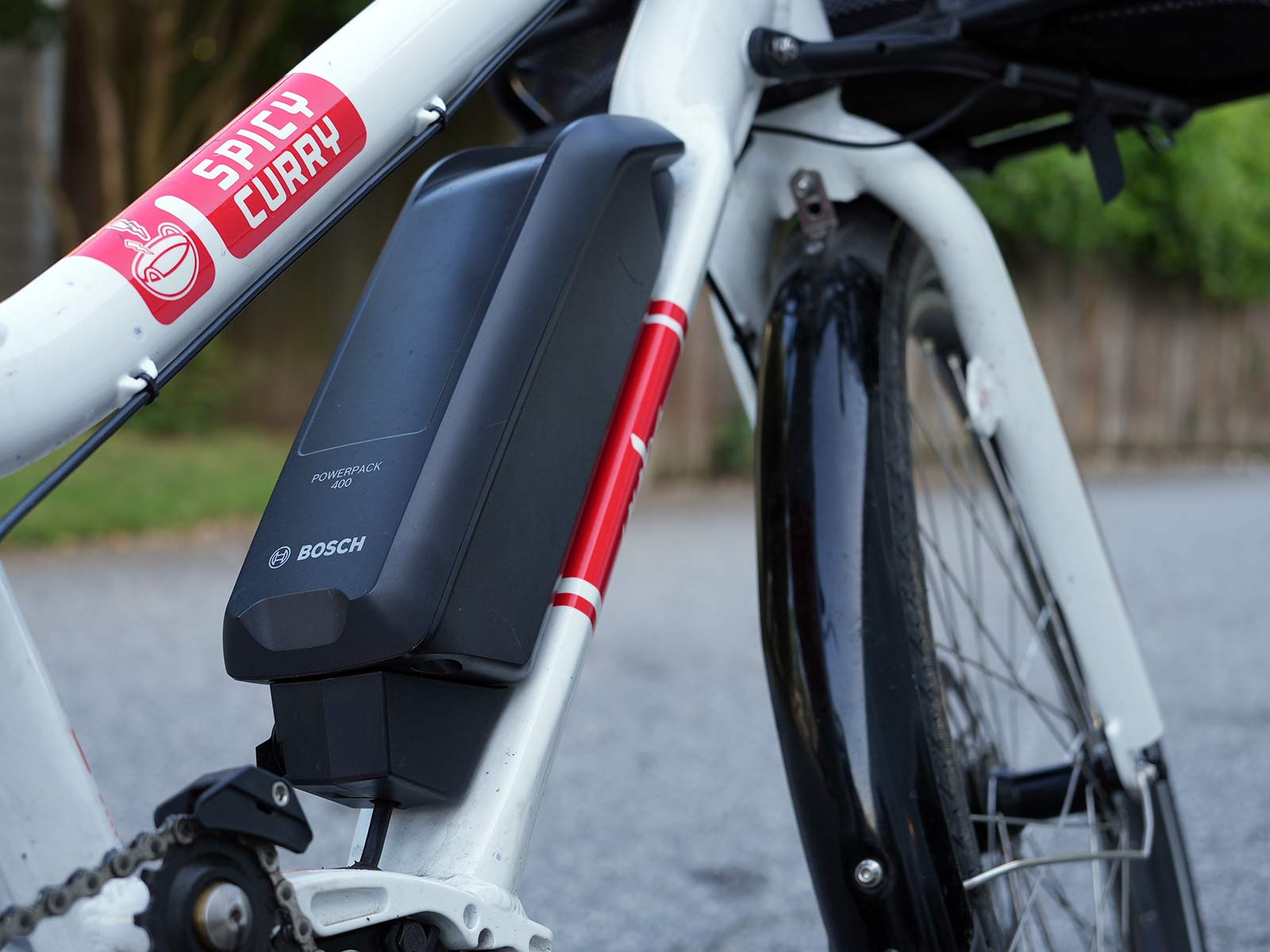Want to make your e-bike faster? Maybe by swapping out the drive system from a 20mph-max Class I motor to a 28mph-max Class III motor? Or fiddling with the settings or other components? Well, hold your horses, because we’re about to explain why it’s a lot more complicated than just switching parts.
For this article, we spoke with the experts at Bosch and Shimano (as well as the product manager for Marin Bikes) for answers, but it’s highly likely that the info here translates across Brose, Fazua, Yamaha, and more. As for hot-rodding your Specialized e-bike? You can probably forget it since they use completely customized shapes and software on their e-bikes.
Can I upgrade the motor from Class 1 to Class 3?
In a perfect world, you could simply upgrade your motor to a more powerful one. And then add a bigger, more powerful battery pack to maintain or even increase ride times. After all, even Ford is offering electric crate motors.
But the world’s not perfect, and swapping e-bike motors isn’t as straightforward as you may think.
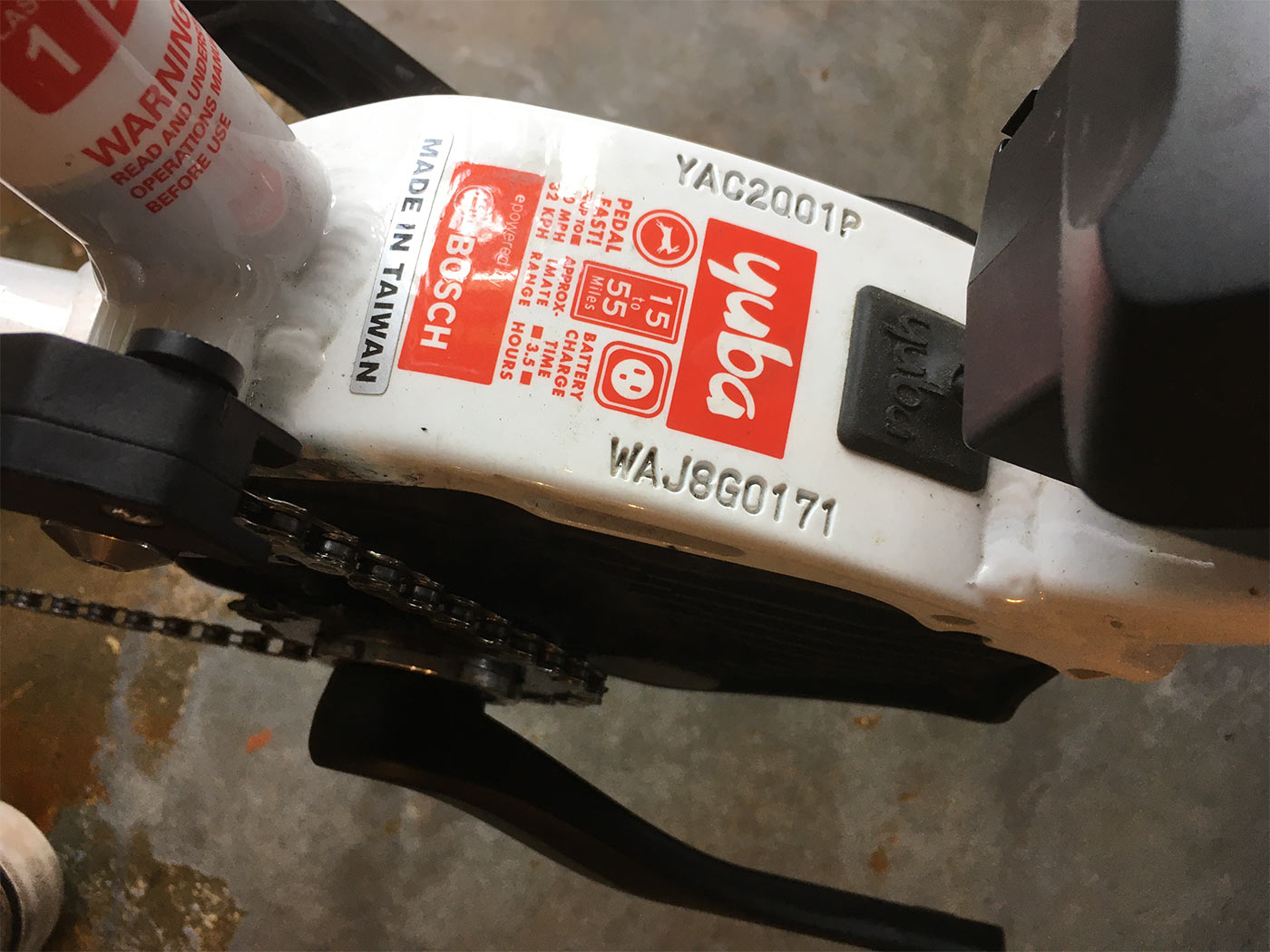
Basically, here’s how the e-bike industry goes, according to Bosch:
- A bike brand orders a Bosch motor.
- Bosch sets the operating system based on the speed class ordered.
- The bike brand receives the motor, then updates that firmware with parameters like wheel size, cassette and chainring (aka Gear Ratios), and any other model-specific details that might affect performance. These settings are what dictate the assist levels’ performance and the actual top speed of the bike.
It’s sort of the same for Shimano:
“Drive units and batteries are indeed available for sale to consumers through bike shops in North America,” says Nick Murdick, Shimano Mountain Bike Product Manager. “There are regulations that prevent aftermarket drive unit sales in many other parts of the world though.”
“Drive units need to be programmed for the bike they are going on, and retailers are not legally allowed to do it themselves, but we have a process in North America where our office can work with the bike shop to get it done.”
“With that being said, it’s not so easy to say that someone could upgrade from E8000 to EP8 or from E7000 to E8000. Some frames can only fit the drive units they were originally spec’d with, while others can use any of the modern ones. The mounting bolts are all in the same location, but the silhouettes are different.”
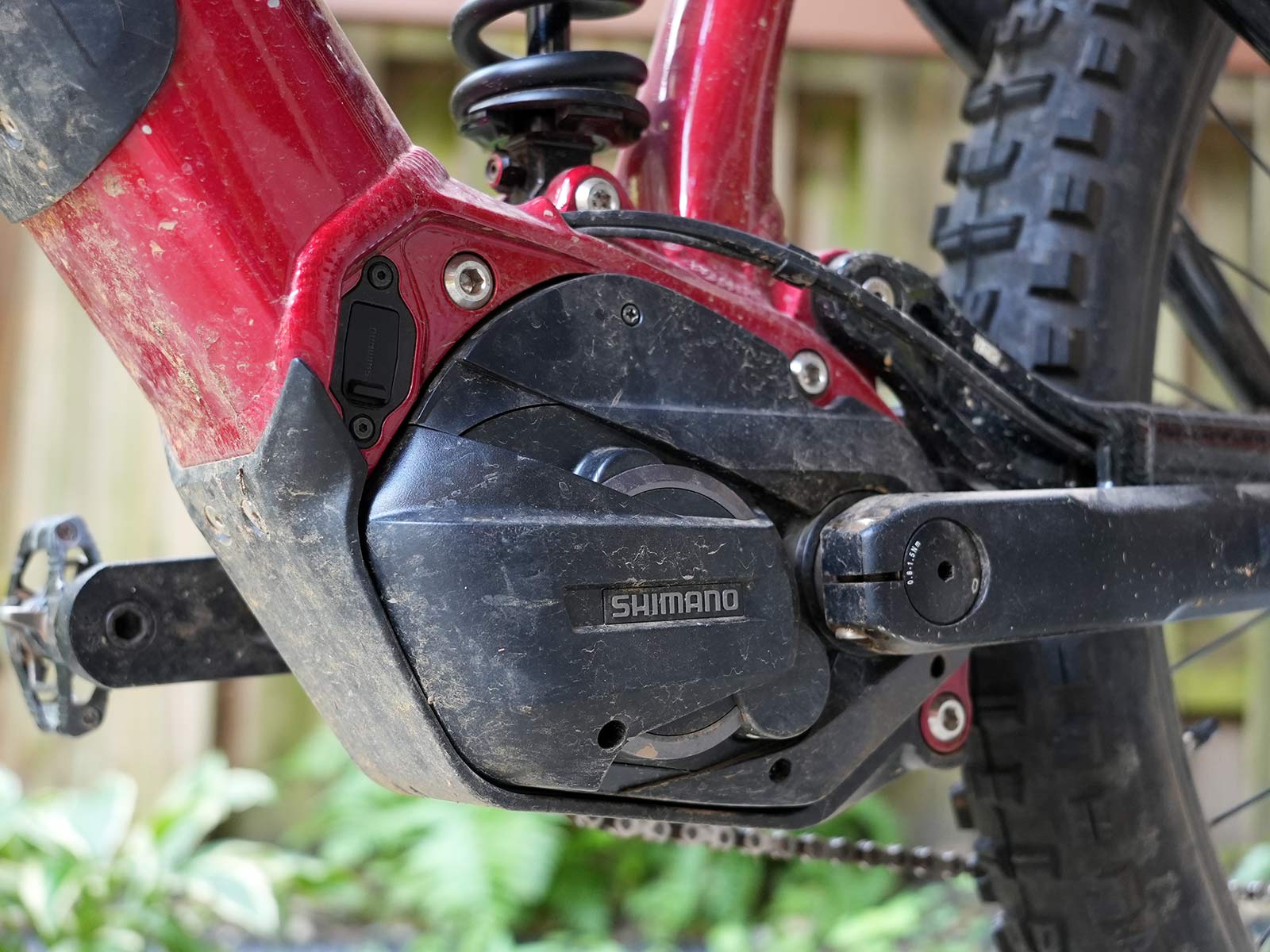
“The frame or cosmetic covers may interfere with some drive units, particularly if there was a very tight fit to the original drive unit. Sometimes the new drive unit will fit but leave a gap, but sometimes it just won’t fit. There isn’t really any go to information source to find out if a drive unit will fit an existing frame. The bike brand may know, but in many cases, no one has ever checked to see if a new drive unit will fit an old frame.”
And here’s Marin’s take:
“The Marin Alpine Trail E (which gets E7000, E8000, and EP8 spec, depending on the model) will all fit on the same motor mount, but you’d have to have it reprogrammed,” says product manager Matthew Cipes. “And since the bike is built to handle the higher powered motors, it’s no problem upgrading, but you’re only gaining more torque, not more speed…they’re all tuned and programmed to be Class 1 bikes.”
“While you might be able to come across a Class 3 EP8 motor, and it might fit, Marin wouldn’t approve such an upgrade. And here’s why: Because we design our bikes to handle the torque and power of a Class 1 motor, so we can’t guarantee that it would be safe. Perhaps the new motor would torque the frame too much. Or it could overpower the brakes.”
What about changing the chainring size on an e-bike?
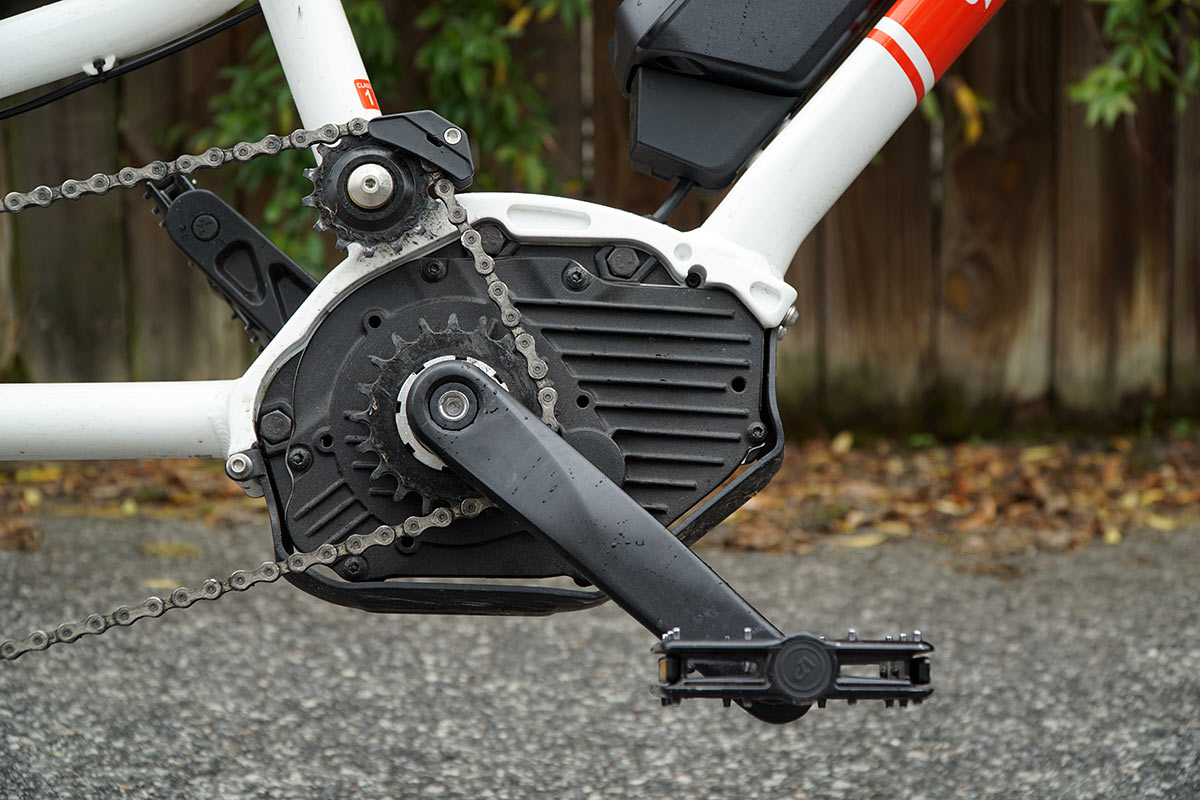
We did this, and it didn’t work out well. But not for the reasons you might think.
First of all, the speed limit is dictated by the wheel speed sensors, and it’s pretty hard to game that on modern bikes. And remember, the amount of assist is pre-set by the bike brand via firmware and software based on the stock drivetrain configuration (i.e. the gears that come on your bike).
In our case, changing chainring size changed how the assist feels and performs, and not in a good way in our experience. Our Yuba Spicy Curry had a worn-out 20-tooth chainring, but because of supply shortages, the only replacement we could get was a smaller 18-tooth chainring:
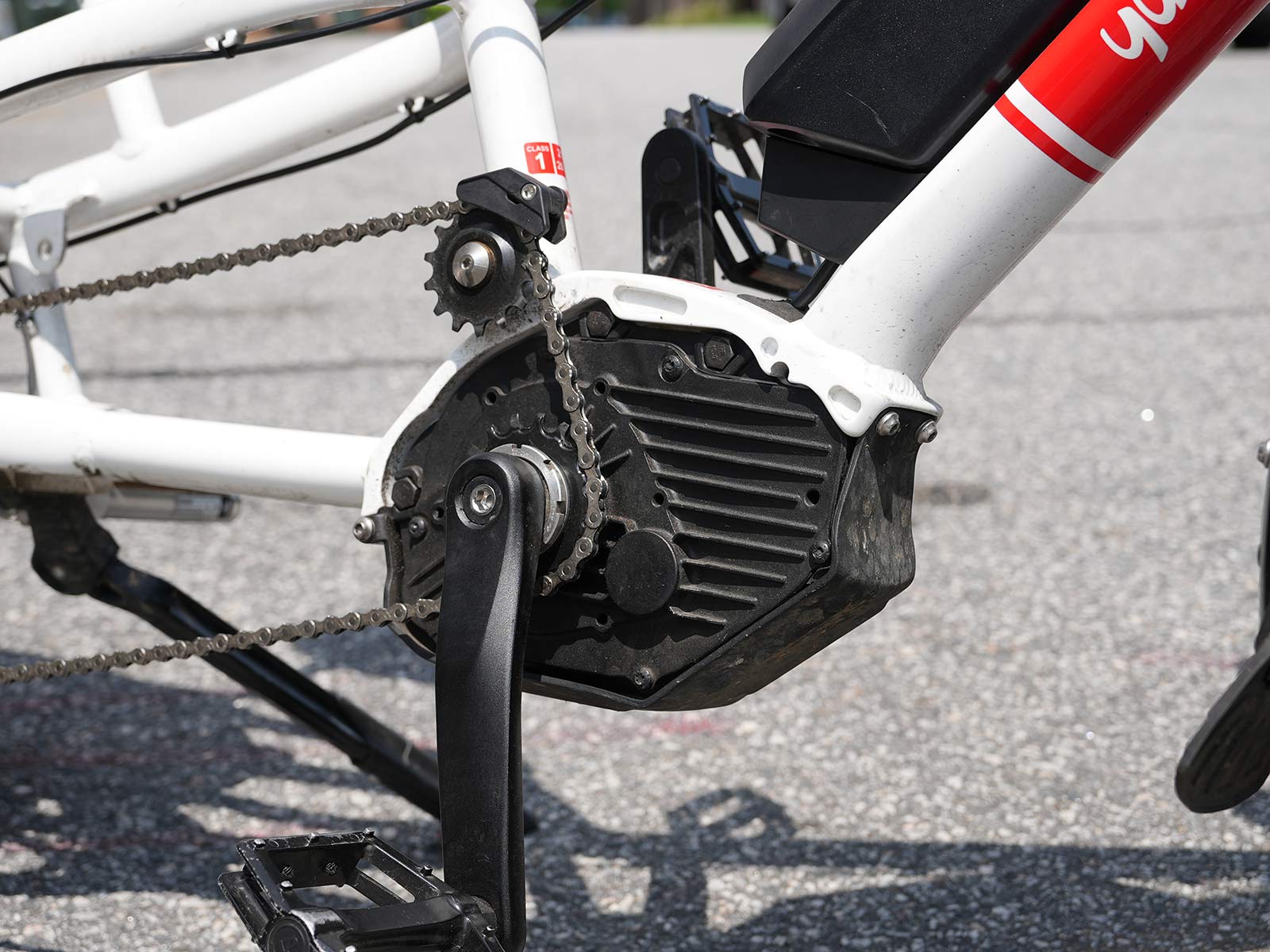
My bike now feels underpowered, with the assist levels somewhat erratic. Sometimes it feels slower, but then kicks in like it should. It’s random, though thankfully will maintain a steady-if-inaccurate output for long stretches of time.
Presumably, putting a larger chainring on there would have a similar effect because either way you’re changing the strain on the system, which is how the drive unit determines your effort level to determine its assist output.
So, the short answer is it’ll change things, but probably not in a good way, and it won’t change the top speed of your bike.
You could change your cassette if you needed easier gearing, and that shouldn’t mess with the output because it’s not directly attached to the drive unit’s strain gauges. But that won’t change your top speed either.
Will changing my wheel size make my e-bike faster?
Technically, yes. Since the speed sensor uses the rear wheel’s rotation to determine speed based on the wheel and tire size parameters from the bike brand, then increasing the diameter of your wheel will make your e-bike faster for a given amount of motor output.
But…unless your bike comes with, say, a 26″ wheel but magically has room for a 29er wheel, then changing your wheel size is not practical…or likely possible. Bikes are purpose-built for a particular wheel size and are not generally able to accept a larger wheel.
You could put a smaller wheel in there, though. Which might improve your acceleration (and cause your pedals to hit the ground), but that would only be good for very, very short drag races… because acceleration may improve, but your top end speed would be lower.
Couldn’t you just move the sensor?
Moving the wheel speed sensor and magnet further in or out won’t make any difference because they’re still going to pass by each other at the same rate. The wheel magnet might be moving faster, but it’s not going to go past the sensor any more or less.
Now, we’ve heard, but haven’t tried and certainly don’t condone, and even by reading this you agree that you take full responsibility for any consequences or damage caused by doing anything even remotely similar to this, that some folks have relocated that sensor further forward and facing outward, then put a magnet on their cranks, which spin at a lower cadence and therefore trick the drive system into going faster. That said, th Sese people are likely to experience much faster battery drain, less torque, and also void their warranty.
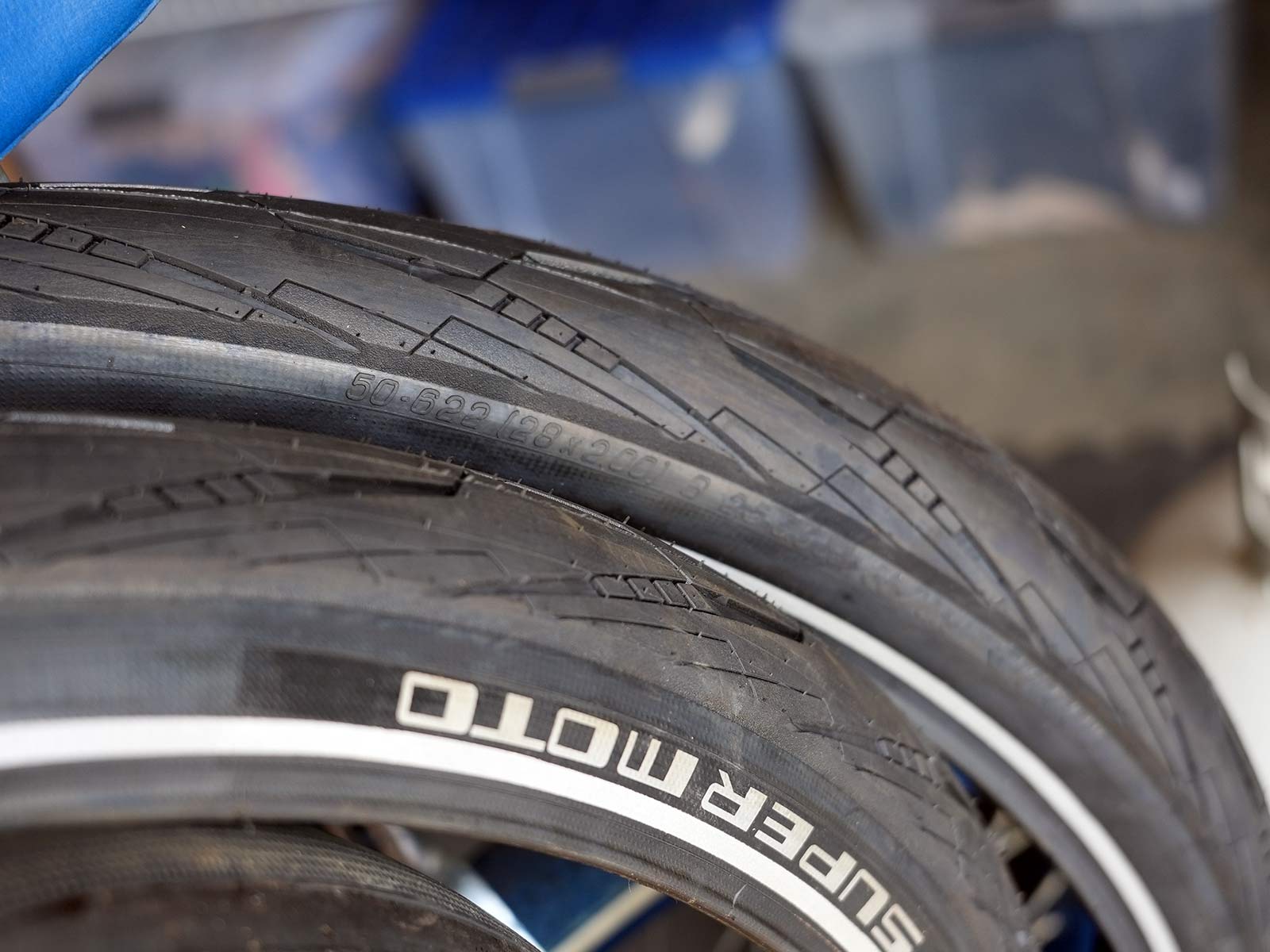
What about bigger tires?
Now you’re onto something. If you can fit a bigger tire into your frame and it increases the diameter of the wheel-tire system, then you might eke out a bit more speed. But realistically, the gains will be minimal, and the extra weight of a larger tire will probably use up battery power at a higher rate, so your gains are hard won.
Can I add a more powerful battery to my e-bike?
Maybe. It depends on the system and the bike.
“It is possible to upgrade to a larger capacity external battery,” adds Murdick. “We have three sizes for the external batteries – 418, 504, and the new 630 Wh models. If the bigger battery will fit without hitting the top tube or shock, it’s a smart upgrade.”
“One very important piece of information though is that the new 630Wh battery required an upgrade to the battery mount to handle the extra weight (BM-E8016 vs the original BM-E8010). If someone wants to use that bigger battery on a bike that came with a smaller battery they will need to upgrade to the stronger mount.”
“Internal batteries can only be upgraded to a larger capacity in one case. We make one battery that is a 504 Wh battery in a 630 Wh case. This allows bike brands to use the same frame for different price points without having to engineer for (both) shorter and longer (batteries). The 504Wh BT-E8035-L can be upgraded to 630Wh BT-E8036, but BT-E8035 is a shorter battery with mounts that are closer together so it can’t be upgraded.”
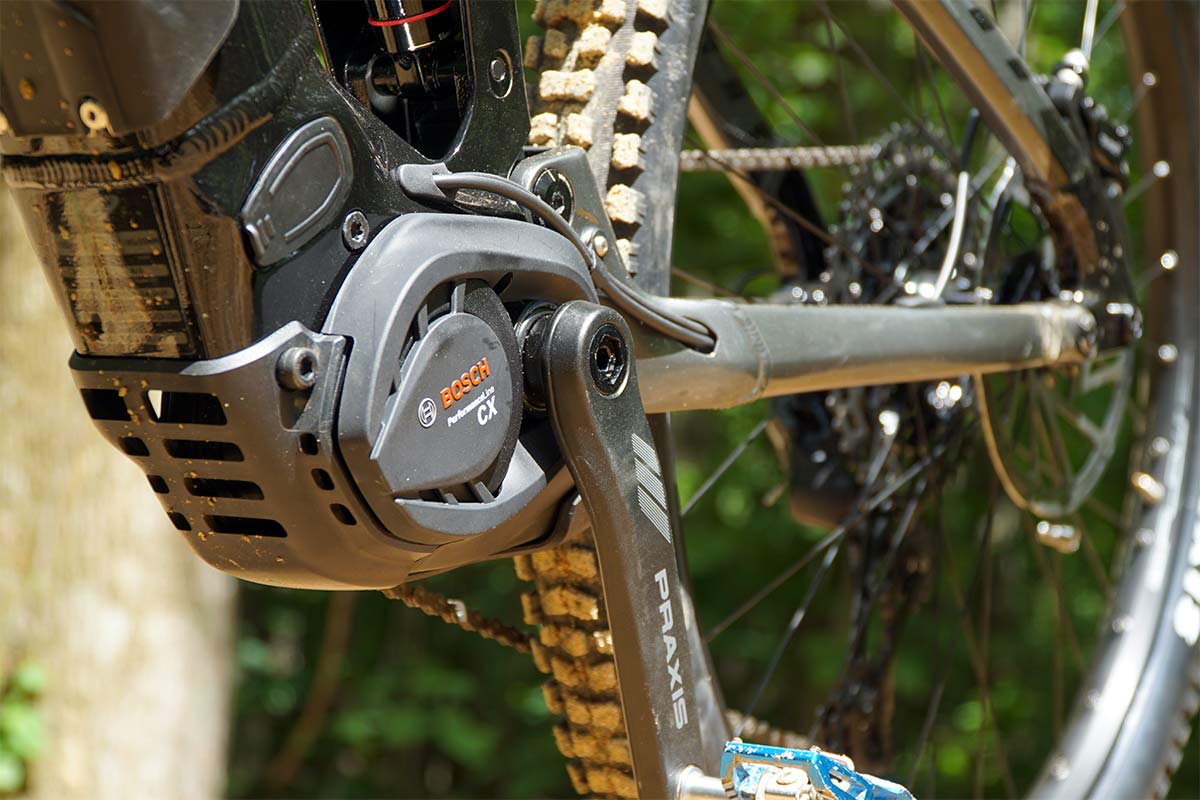
All that said, on complete e-bikes sold through legitimate channels, swapping to a bigger battery is only going to increase your range, not your speed. That’s mainly because the software and motor are both designed to work with a certain wattage and amperage, and your battery’s output has to match that lest you damage the system.
I specify “complete e-bikes” because if you’re hacking together your own system, then yes, there are a lot of ways to make your bikes very, very fast (and illegal). But you also need to be sure the frame, wheels, and brakes can handle the speed.
That’s important: Unless a bike brand is using the same frame on both low- and high-power models, their frames, chains, and drivetrains might not be able to handle the torque over the long term.
What upgrades can I make on my own?
Charging speed is a big one. Many Bosch bikes ship with their 2A compact charger, because it’s less expensive. If you were the product manager for a bike brand and you could save money on the charger that’s included and put that money into better spec on the bike so it looks better on the showroom, wouldn’t you?
But Bosch offers a more powerful 4A standard charger that cuts your charging time almost in half. For their popular PowerTube 500 battery, a complete charge goes from 7.5 hours down to 4.5 hours just by using the more powerful charger. (Electric cars do the same thing, BTW)
It won’t make your bike faster, but it’ll get you going on it faster and add more range during those quick mid-day top offs.
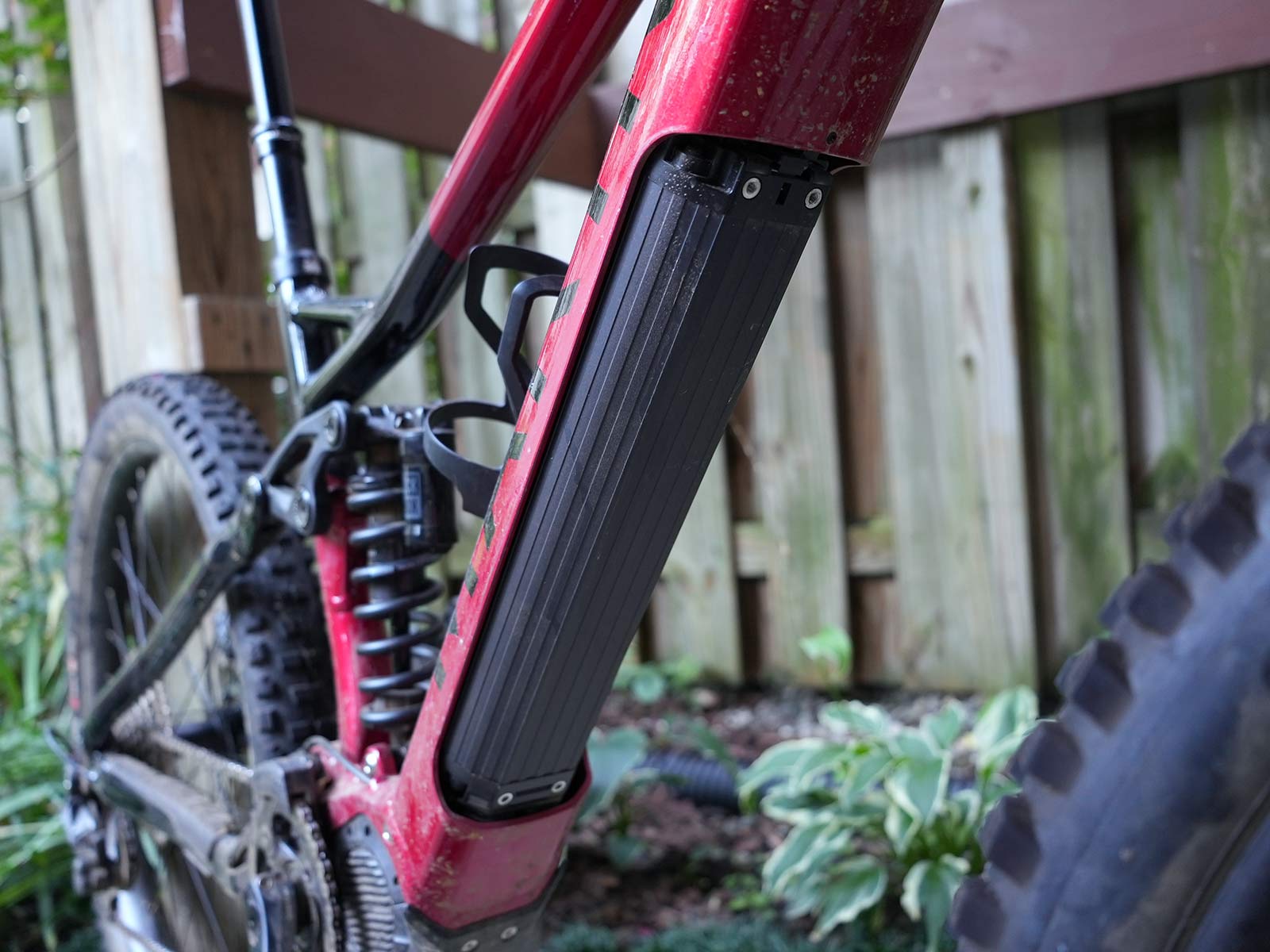
And as for batteries, if I were to upgrade from an E7000 motor to one of the bigger motors on the Marin, I wouldn’t be able to upgrade to a larger battery because the brackets are welded into place specifically for the size battery that’s spec’d on the bike. So, the larger batteries simply won’t fit.
For bikes with external batteries or tubes built around the larger battery packs, you could potentially do this. But again, this will only change your range, not your power or speed.
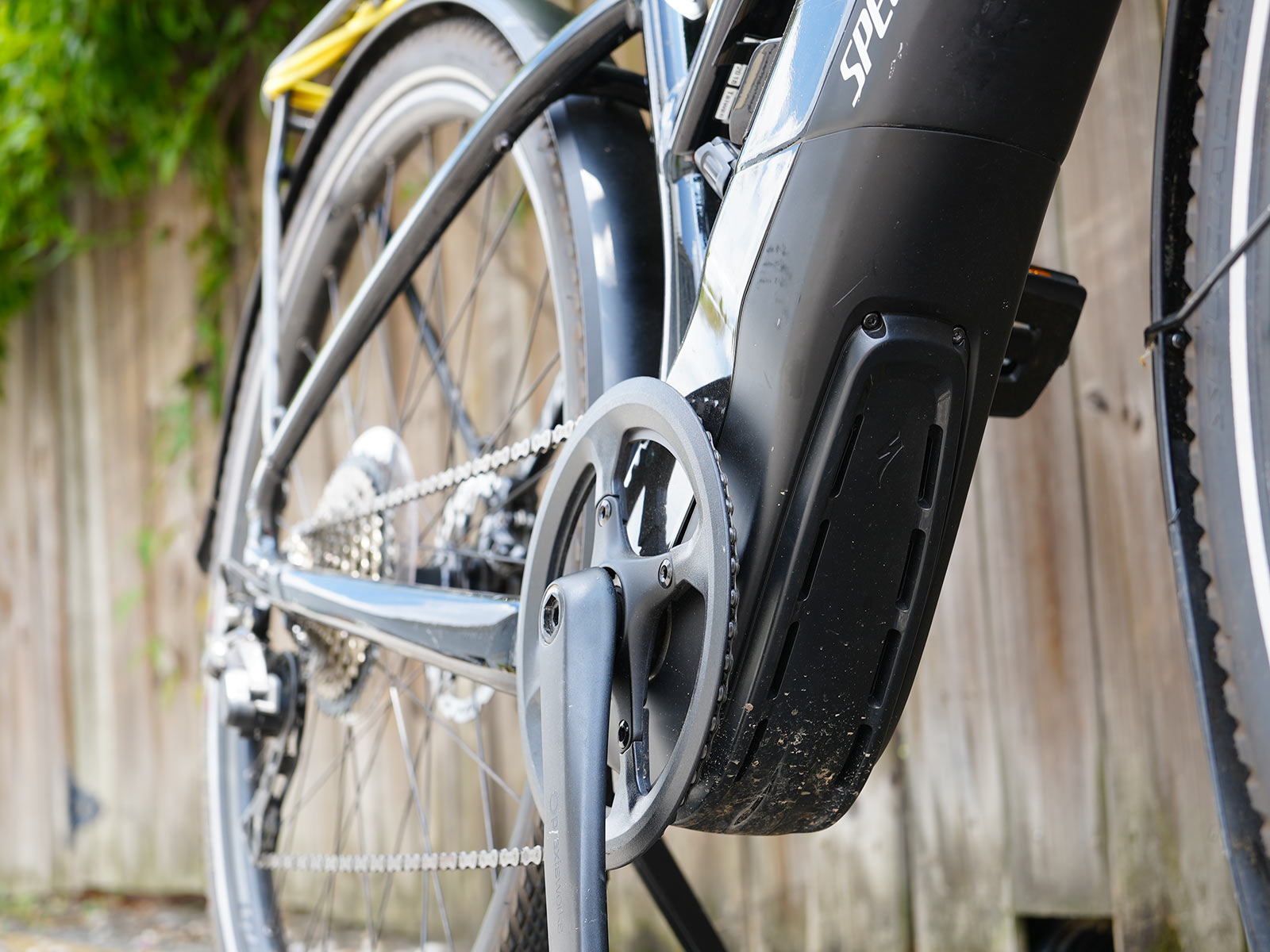
Can’t I hack my e-bike software?
Maybe, but these are largely closed systems. Supposing you could gain access to OEM tuning software, the easiest way to bump your top speed would change the “wheel size” number to a smaller wheel size.
But that would mess up your torque, which would degrade actual performance even if you were going faster.
And if you were to be able to do a full re-tune, you could change everything, but you’d end up draining your battery much, much faster.
Sadly, there’s always a tradeoff. Which means the best course of action is to simply buy the bike with the motor you really want in the first place, then upgrade everything else as budget allows.
That, and take your bike by the shop now and then for any firmware updates, you might be surprised at how much better it performs if there’s been a major update since you bought it.
Got a question of your own? Click here to use the Ask A Stupid Question form to submit questions on any cycling-related topic of your choice, and we’ll get the experts to answer them for you!

